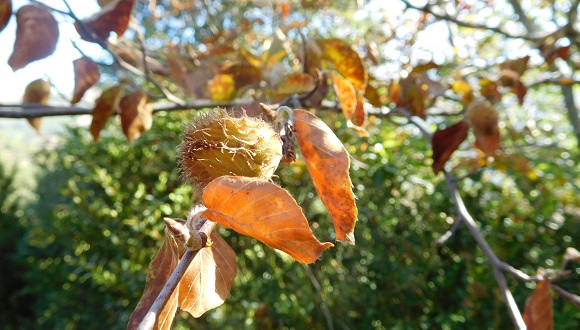Do drought-affected trees die of thirst or hunger?
A new study has concluded that, universally, trees that have died from drought are unable to transport water to their leaves. The findings also highlight trees that have drained their carbon reserves since they are not able to carry out photosynthesis. The results of the study will permit the creation of more precise models for predicting the effects of climatic changes on vegetation.

Everyone knows that water scarcity kills plants, but until now the exact mechanisms for final mortality weren’t fully understood. New research, published yesterday in Nature Ecology & Evolution, has shown that hydraulic failure —the inability to transport water from roots all the way to leaves— is the universal mechanism by which drought kills trees. “If the drought is very severe, 100% of the trees die of thirst, regardless of the place on Earth or the species. But, in addition, there are trees which also die of hunger as a result of water scarcity,” says Jordi Martínez Vilalta, one of the authors of the study and researcher at CREAF and the UAB. The study included sixty authors from around the world, and is a synthesis of previous articles on how drought kills different tree species
Stomatal closure curbs dehydration
During droughts plants are forced to close their stomas, pores on the leaf surface where CO2 —a critical ingredient for photosynthesis— enters the plant. Trees use 99% of the obtained water to keep stomas open, and closing them allows plants to avoid significant water loss through transpiration. “Plants have a high capacity for regulating the flow of water which arrives to the leaves,” says Maruizio Mencuccini, another study author from CREAF and ICREA.
“If the drought is very severe, 100% of the trees die of thirst, regardless of the place on Earth or the species. But, in addition, there are trees which also die of hunger as a result of water scarcity.”
However, when water availability in the soil is diminished, the plant has a harder time getting the water all the way to the leaves. This is when the internal tissues of the tree which transport water undergo embolisms; during an embolism, bubbles are formed, blocking the conduits, and water isn’t able to get to the leaves. “It is a process which has many similarities to the embolisms which affect people,” says Mencuccini. The new research shows that when a tree dies, their capacity for water transport has been reduced by at least 60%.

Without photosynthesis plants are left without energy stores
Crucially, with closed stomas trees cannot absorb the carbon dioxide needed for photosynthesis; this process uses atmospheric CO2 (and releases oxygen back into the atmosphere) in order to create carbohydrates which the plant uses as an energy source, feeding growth. This is the way in which plants must feed themselves.
Therefore, when plants can’t carry out photosynthesis they rely on carbohydrates which were manufactured and stored previously. “We have seen that around 50% of the trees are without carbon reserves in the moment before death. So, this doesn’t happen all of the time, but it is much more frequent than we expected. Therefore, in addition to dying of thirst, many also die of hunger and starvation because they are left without reserves,” says the study’s first author, Henry D. Adams from Oklahoma State University in the United States. In fact, it was found that trees such as pines are particularly sensitive, and in particular the Scots pine, a tree which was found to have more than 80% of its reserves depleted under such circumstances.

Knowledge to improve predictive models
Through photosynthesis plants absorb around 30% of the CO2 emitted by humans into the atmosphere, a very important mitigation mechanism to fight against global warming. But climate change causes droughts which are so frequent and severe that over the last decade they have caused sudden changes in plant communities on a large scale with huge tree die-offs. This can change the velocity of global climate change since the role of forests may change from large carbon stores into sources, emitting carbon into the atmosphere.
This discovery of how drought causes tree death can be used to make improved predictive models on how droughts will affect forests around the world. “The study contributes a large consensus. And it does this with a unified theory which responds to the very basic question, ‘how does drought actually kill trees?’ With this, us scientists will be able to make more precise and realistic predictions, and as a result focus on more effective solutions,” says Jordi Martínez Vilalta.
ARTICLE
Adams H.D., Martínez-Vilalta J., Mencuccini M., et al. (2017). A multi-species synthesis of physiological mechanisms in drought-induced tree mortality. Nature Ecology & Evolution. DOI 10.1038/s41559-017-0248-x






